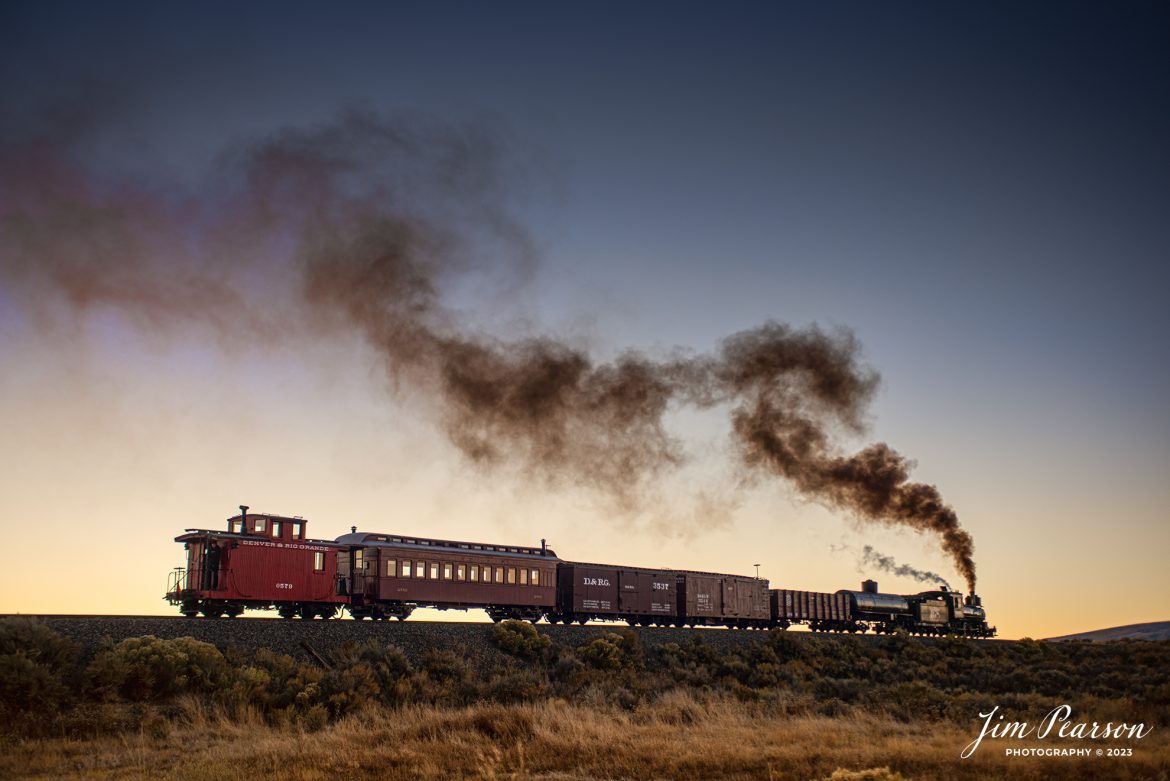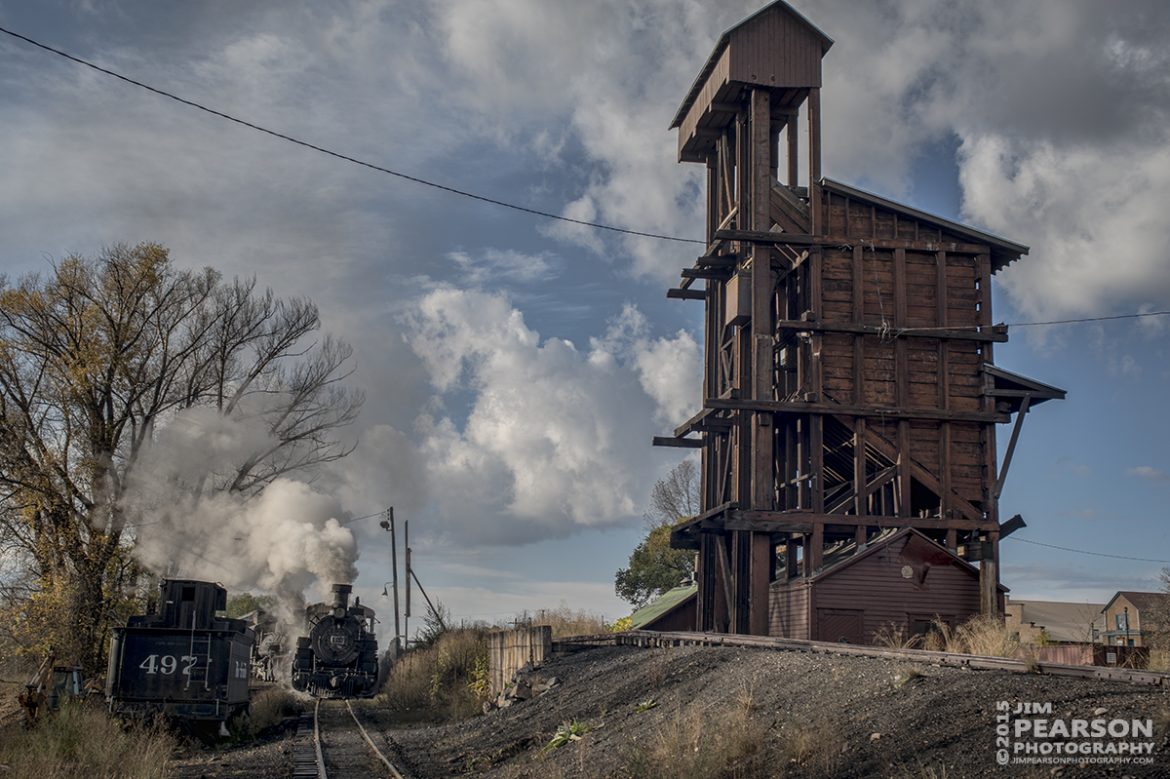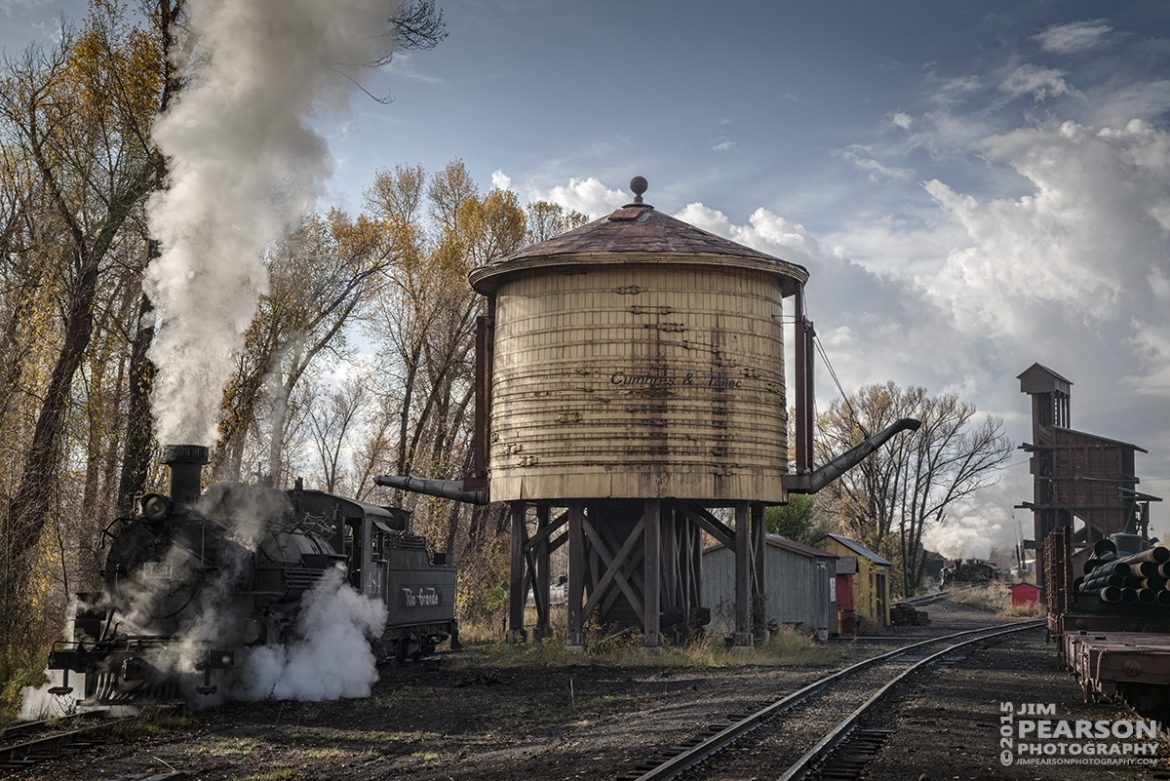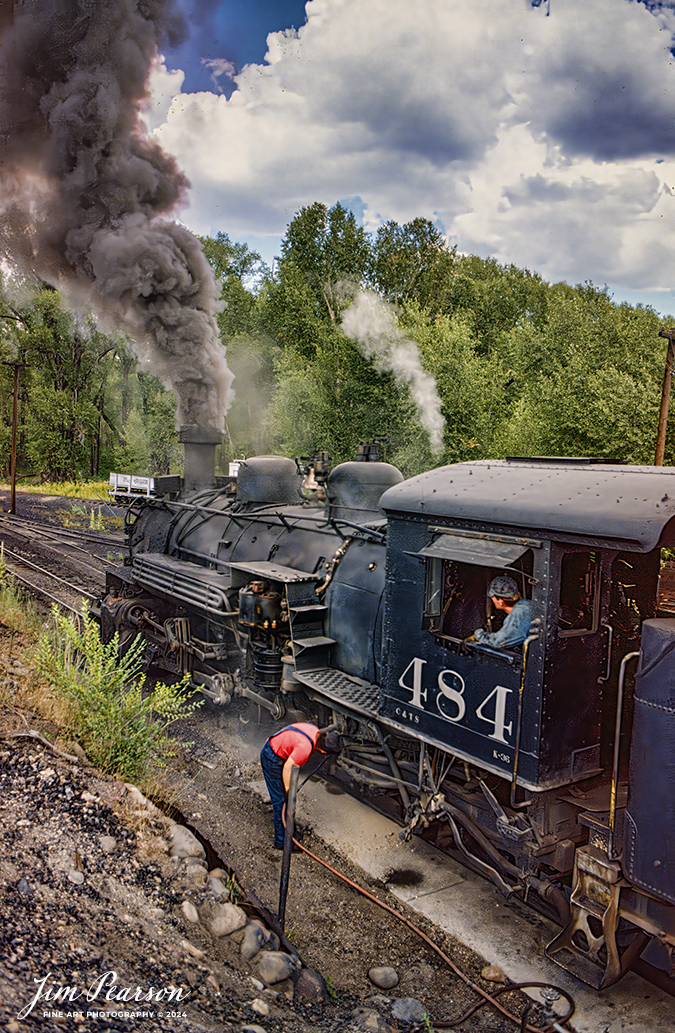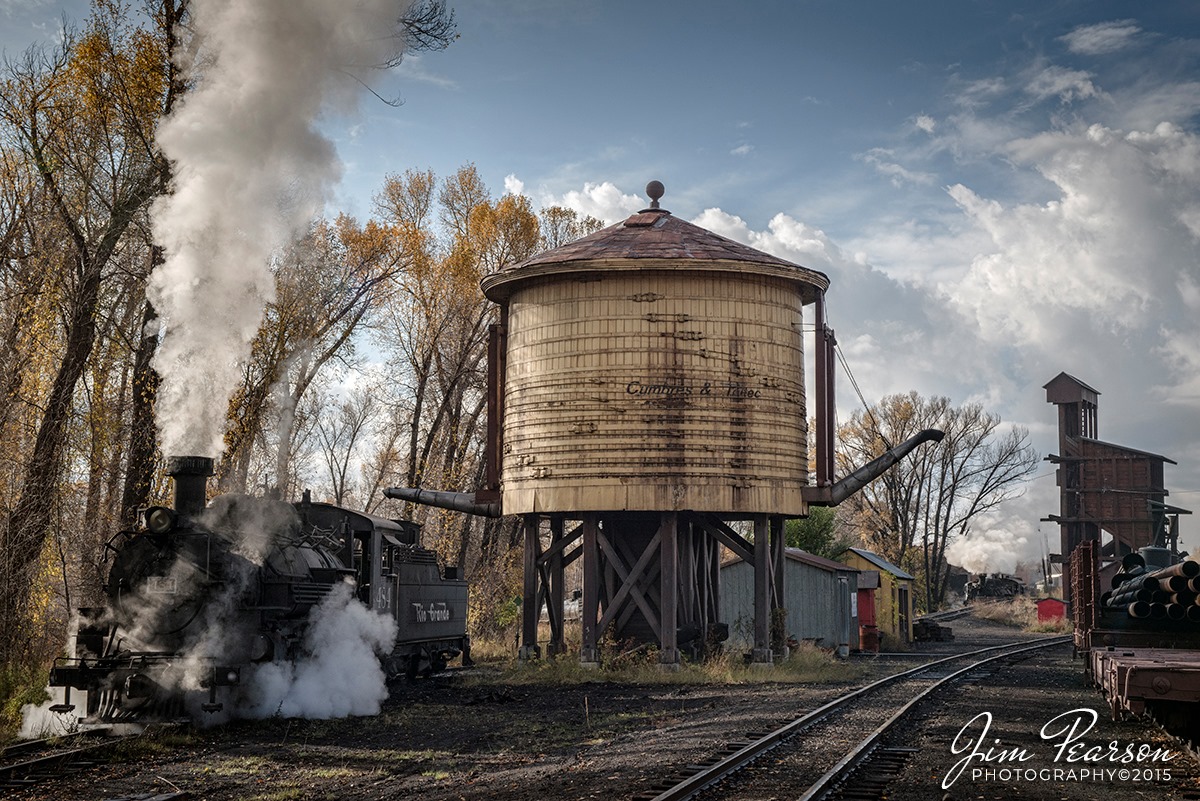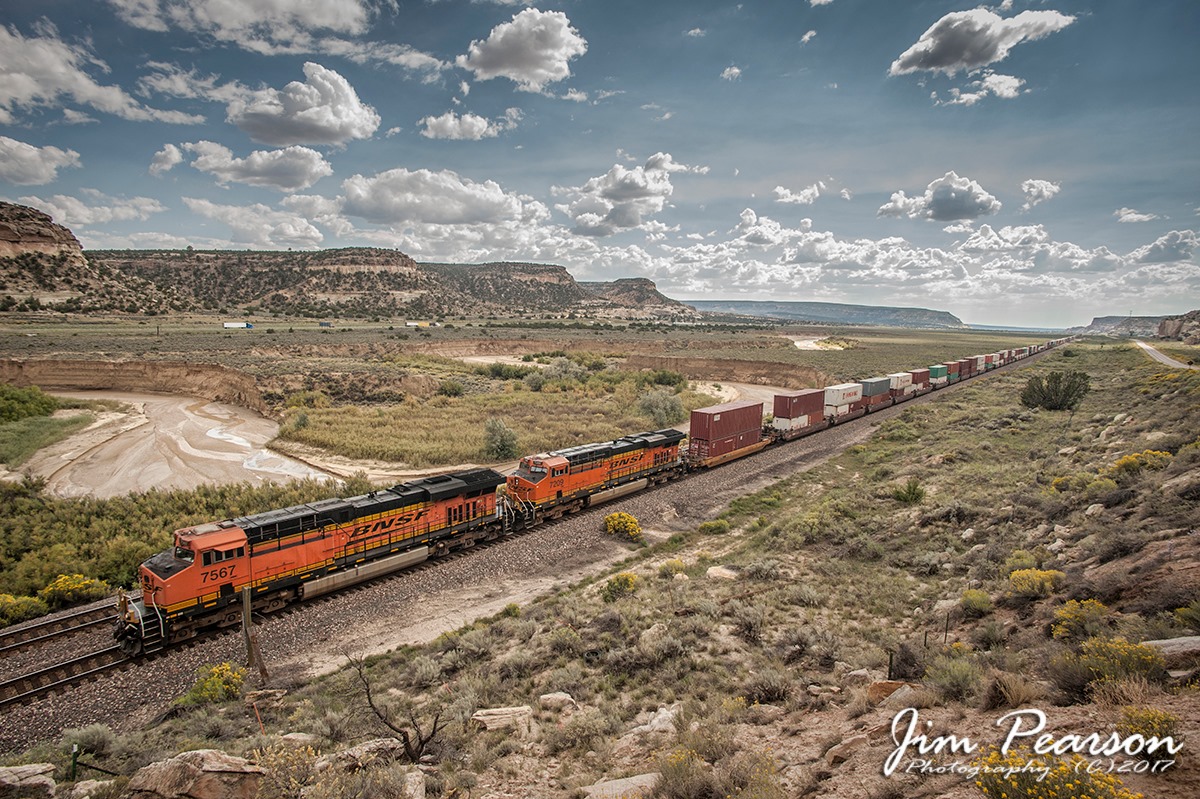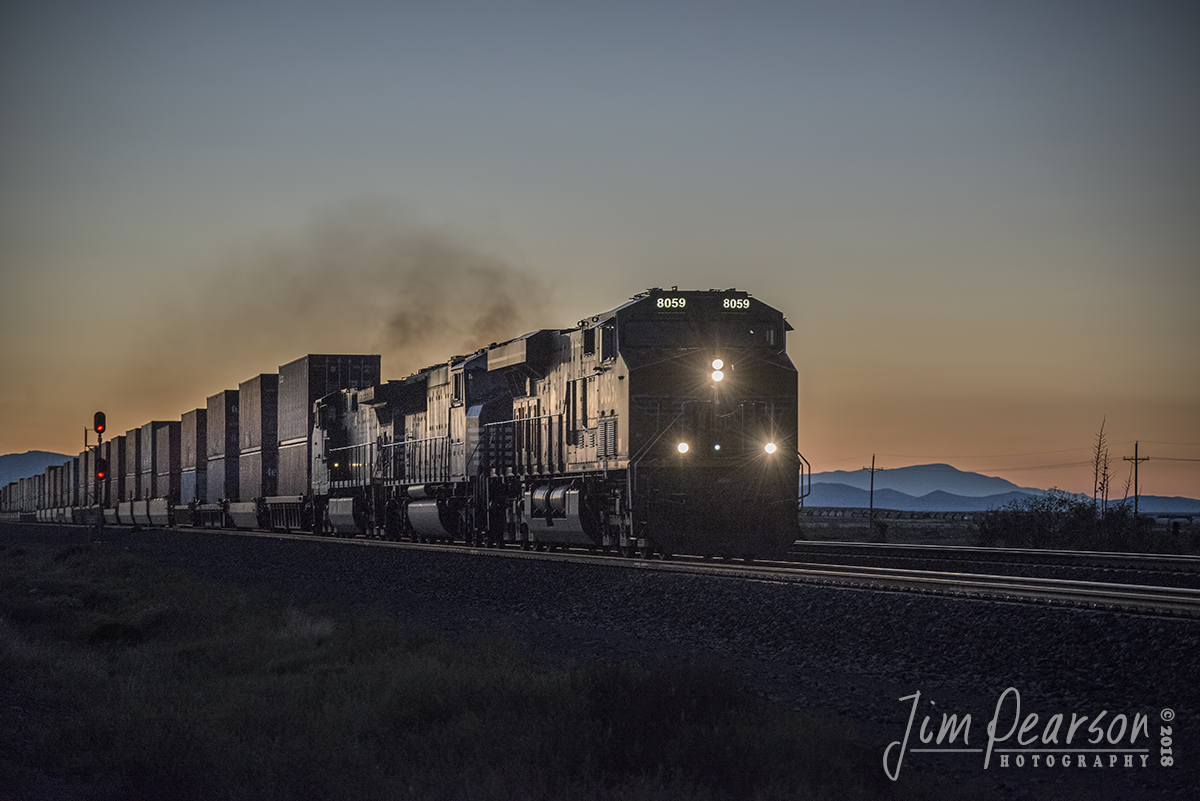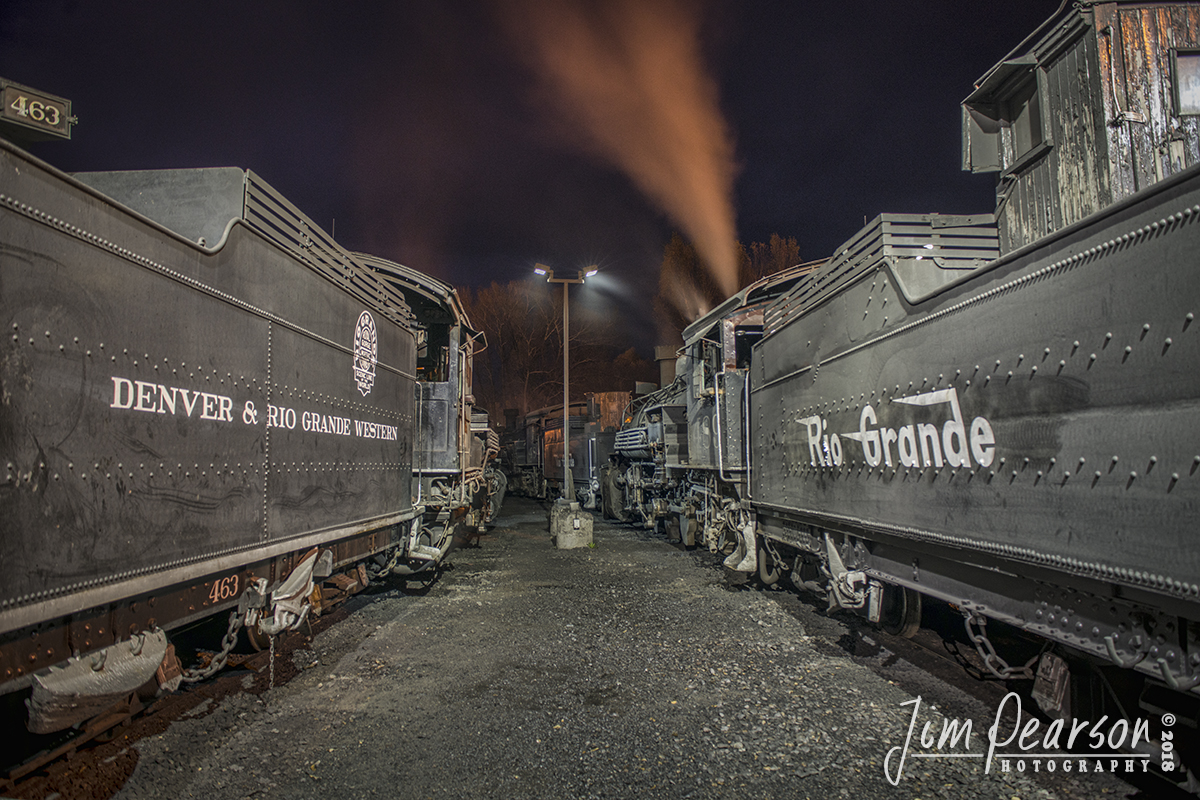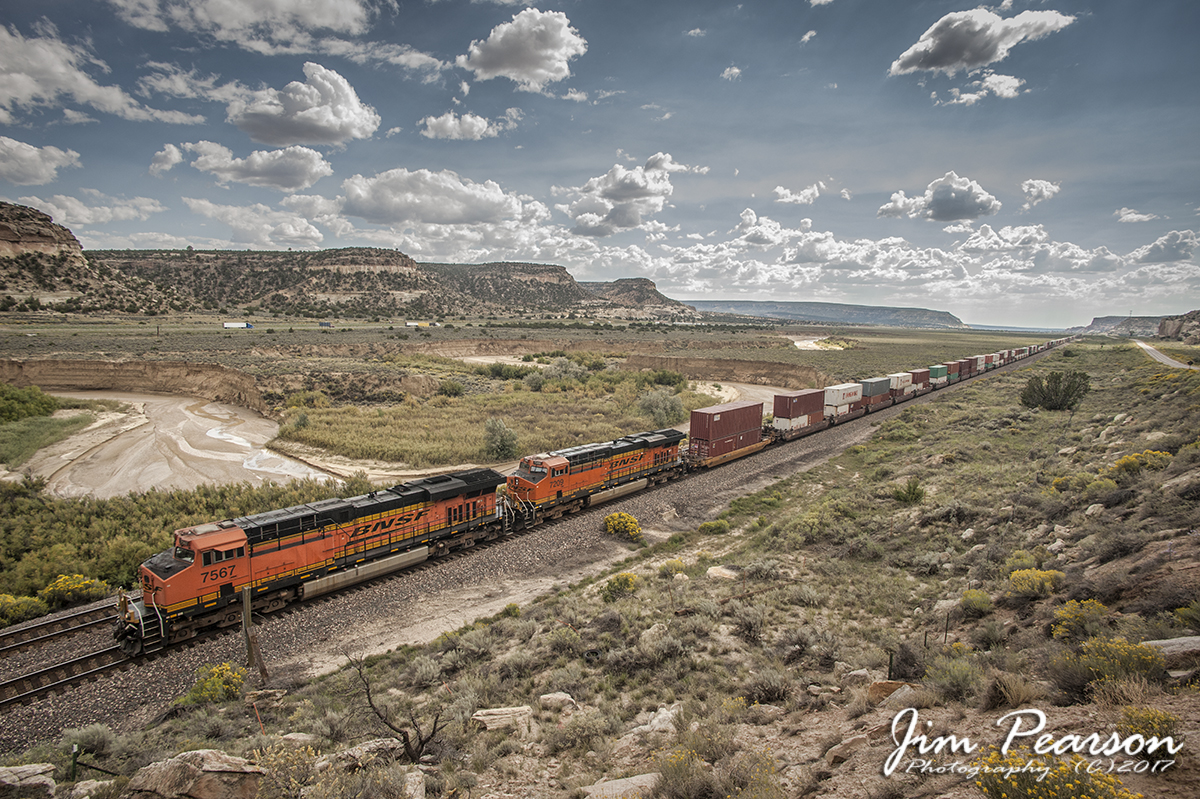Blast From The Past – October 20, 2015 – Cumbres & Toltec Scenic Railroad Locomotive 484 sits next to the water tower at Chama, New Mexico, after the last day of scheduled revenue runs for the year. Chama is one of my favorite steam operations to photograph!
According to Wikipedia: The Cumbres & Toltec Scenic Railroad, often abbreviated as C&TSRR, is a 3 ft (914 mm) narrow-gauge heritage railroad running for 64 miles (103 km) between Antonito, Colorado and Chama, New Mexico, United States. The railroad gets its name from two geographical features along the route, the 10,015-foot (3,053 m)-high Cumbres Pass and the Toltec Gorge. Originally part of the Denver and Rio Grande Western Railroad’s narrow-gauge network, the line has been jointly owned by the states of Colorado and New Mexico since 1970.
The rail line over which the Cumbres & Toltec operates was constructed in 1881 by the Denver and Rio Grande Western Railroad (D&RGW) as part of their San Juan extension stretching from Alamosa, Colorado to Durango, Colorado. The line was originally built to support mining operations in the San Juan Mountains, mainly around Durango and Silverton. By the mid 20th century, the ore traffic had dwindled but the line continued to support various agricultural and industrial operations until the 1960s.
In 1968, freight traffic was virtually gone and the railroad began the process of abandoning the line. However, the states of Colorado and New Mexico purchased the 64 mile portion between Antonito and Chama in 1970 and began excursion services on the route as the Cumbres & Toltec Scenic Railroad.
The Cumbres & Toltec Scenic Railroad operates between late May and late October with two trains (one in each direction) departing each morning from Antonito and Chama. Both trains are timed to meet at Osier, an old section town located about halfway along the route, for a lunch stop. Afterwards, passengers continue with their train to its destination or switch trains to return to their original terminal. Through riders are returned to their starting place by motorcoach after the train arrives at its destination.
In addition to the through service, the C&TSRR operates various special excursions during the season such as dinner trains. On certain days during the holiday season, the railroad offers special “Santa Trains” from both Chama and Antonito and guests are encouraged to bring gifts and/or food for the less fortunate.

